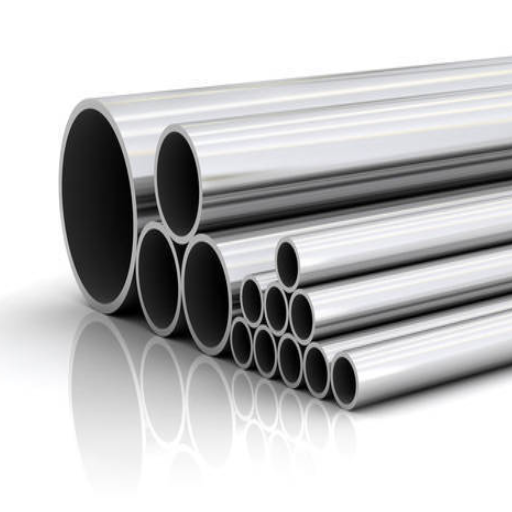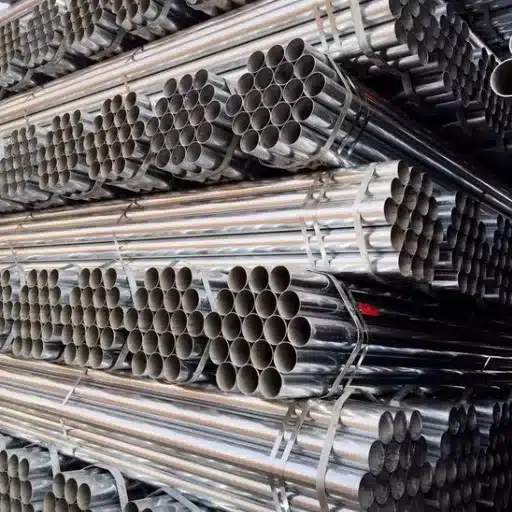Stainless steel seamless tubes are a critical component in a wide range of industries, valued for their durability, corrosion resistance, and superior performance under extreme conditions. From applications in chemical processing and power generation to their indispensable role in construction and automotive manufacturing, these tubes are engineered to meet the most demanding needs. This article will provide a comprehensive overview of stainless steel seamless tubes, exploring their unique manufacturing process, the advantages they offer over welded alternatives, and the various grades and specifications that make them suitable for specialized uses. Whether you’re an industry professional seeking detailed insights or a curious reader looking to expand your knowledge, this guide will equip you with everything you need to understand about this essential material.
What is a Stainless Steel Seamless Tube?
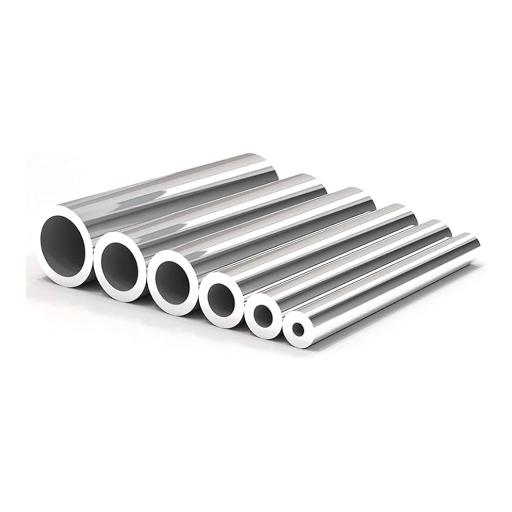
Understanding the Seamless Manufacturing Process
The production of stainless steel seamless tubes undergoes a meticulous procedure aimed at achieving a seamless product without any joints, providing unmatched strength. It starts with a solid, cylindrical, stainless steel wrought, which is then torched to make it pliable. The wrought is then pierced using specialized machining to create a hollow tube. Such initial piercing ensures that all attempts at achieving no seams are met with success.
After piercing, the hollow tube is elongated and shaped using various extrusion or rolling techniques, depending on the desired height, width, and thickness of the seamless tube. These forming methods ensure uniformity while retaining the seamless nature of the tube. The produced tube is then resized and finished using cold drawing, where the tube is pulled through a die to enhance the surface finish and achieve specified dimensions. Often, some heat treatments, such as annealing, are done to enhance some other properties, like flexibility and resistance to corrosion, to make the tubes fit for demanding applications.
The manufacturing process done without welding provides additional benefits over welded tubes. The absence of welded seams allows these tubes to have greater structural strength, which means they can resist high pressures, extreme heat, and corrosive environments without failing. As a result, seamless stainless steel tubes are critical for many industries including oil and gas, aerospace, and chemical processing. Their seamless tubes also have uniform composition and high tensile strength which allows them to withstand challenging conditions for long periods of time.
Benefits of Using Seamless Tubes Over Welded Tubes
Seamless tubes are superior to welded tubes in strength and dependability. Unlike welded tubes, seamless tubes are made without a weld seam, which is a potential weak point. The lack of a seam improves the durability of seamless tubes in high-pressure contexts and diminishes the likelihood of leaks or structural degradation over time. Their composite structure ensures uniform strength throughout the tube, which gives seamless tubes the ability to withstand extreme surroundings.
Seamless tubes also provide better protection from corrosion and stress. Welded tubes are prone to critical weakness in the band around the weld and are often susceptible to corrosion and stress fatigue. In contrast, seamless tubes have uniform material properties, which improve performance in corrosive and volatile situations, like chemical processing, oil, and gas exploration.
In addition, seamless tubes offer better accuracy and shape control than welded tubes. This level of accuracy is important in fields such as aerospace or automotive manufacturing that involve intricate requirements. With seamless tubes, uniformity is ensured, which is essential in applications with consistent wall thickness. All of these ways make seamless tubes the best option when safety and efficiency are key requirements.
Applications of Stainless Steel Seamless Tubing
High durability seamless stainless steel tubes are omnipresent within the healthcare industry. The military makes good use of high-precision and low-weight seamless stainless steel tubes for airplanes and missiles. The tubes have no structural weaknesses and hence make great components for hydraulic systems, fuel lines, and structural parts that have to bear extreme temperatures and pressures.
It is one of the most primordial components for robust and atomized responsive fuel transfer systems especially for corrosive liquids and gasses in chemical and petrochemical industries. Their long-term reliability in heat exchangers, condensers, and reactors, even in heavily corrosive environments, is ensured by their superb corrosion resistance.
Hypodermic needles and catheter systems are examples of surgical appliances made from seamless stainless steel tubes. Because contamination, precision, and biocompatibility work hand in hand, precision instruments like these are a must in surgical procedures. These all require seamless tubes, and keeping these systems operational relies on seamless and steel tubes being durable and reliable components.
How to Choose the Right Stainless Steel Seamless Tube?
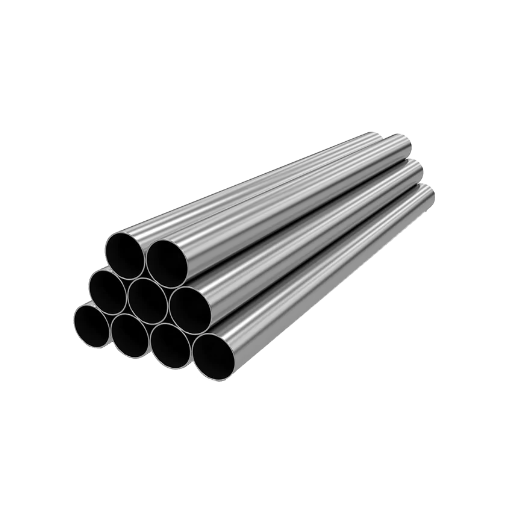
Importance of Corrosion Resistance and Mechanical Properties
Choosing stainless steel seamless tubing requires careful consideration of factors such as corrosion resistance and mechanical properties, especially in harsh environments. Material endurance is sustained through corrosion resistance, which mitigates the removal of parts of the material due to degradation from exposure to moisture, chemicals, or industrial atmospheres. This is crucial in chemical processing or marine applications where high chloride concentrations and corrosive materials are present. Austenitic stainless steels like 304 and 316 grades are commonly used because they specialize in enduring both general and localized corrosion.
Mechanical properties as well as corrosion resistance include the tubing’s ability to bear operating internal pressures, mechanical stresses, and thermal loads such as tensile strength, yield strength, and ductility. For example, seamless hardware in high-pressure systems such as hydraulic lines or boilers must withstand enormous tensile stress without ultimate failure. The selection process should also contemplate the ability to incorporate durability-enhancing machining or fabrication to meet specific operational needs.
The properties characterization has greatly improved with new innovations in metallurgy and testing techniques. Corrosion salt spray tests and critical pitting temperature analyses are some of the advanced corrosion testing techniques which give accurate material performance evaluations under extreme conditions.
Selecting the Appropriate Diameter and Wall Thickness
When selecting the right diameter and wall thickness for tubing should consider the application’s requirements, such as pressure ratings, flow rates, mechanical loads, and environmental conditions. Getting the flow rate right is also critical. A larger diameter helps improve flow rate, though the structure may require extra support. Thick walls improve material strength and ability to withstand internal and external pressure as well as deformation or collapse under load.
Some advanced forms of computational simulations, such as finite element analysis (FEA) provide a deeper insight into the particular working conditions the tubing will be subjected to in terms with regards to stresses and strains. Besides, choosing an alloy or composite requires care since diverse mechanical and chemical properties are exhibited. An instance would be stainless steel tubing being used in the construction of components that require great corrosion resistance. These components could also include those parts where weight is an issue, in which case, lightweight alloys like aluminum would be used.
These organizations also make sure that the reliability and safety standards are met which minimizes the material cost. Coupling testing data with modern simulation techniques allows engineers to confidently specify tubing dimensions that enhance performance and extend service life in physically challenging operating conditions.
How is 304 Stainless Steel Seamless Tubing Made?
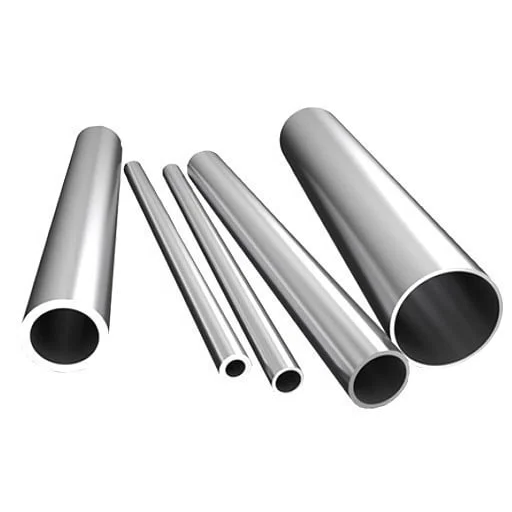
Key Steps in the Seamless Manufacturing Process
Manufacturing 304 stainless steel seamless tubing involves several tightly regulated steps to achieve precision, consistent structural integrity, and conformity to complex industrial benchmarks. Below are the steps:
- Choosing Appropriate Raw Materials: This process starts with austenitic 304 stainless steel billets or bars, which are stainless steel assets. The grade of steel is usually selected as such due to its exceptional resistance to corrosion, ability to withstand tensile forces, and weldability. The raw materials are also rigorously checked for chemical composition and dimensions.
- Heating and Piercing: To enhance the malleability of the billets, they are placed in rotary furnaces set to a precise temperature of between 2,000°F and 2,300°F (1,093°C to 1,260°C). After heating, the material passes through a piercer mill where a mandrel forms a hollow feature cross-section in the billet, creating a tube shape.
- Elongation and Sizing: Hollowed-out billets are subjected to rotary elongators, which stretch them in the axial direction, reducing their diameter, and also using stretch-reducing mills and precision rollers. All of these processes combined create the desired wall thickness. This step is critical for achieving uniform dimensions and mechanical properties.
- Cold Working: For finishing requirements of surface coating and precise tolerances, each tube undergoes cold working operations such as cold drawing or cold rolling. These processes alter the part’s as-manufactured state without adding heat and causes the mechanical properties to improve, such as the yield strength and hardness.
- Solution Annealing: With respect to relieving internal stresses as well as restoring an austenitic structure, the particular tube is again heated at high temperatures around 1800 to 2100 fahrenheit (982 to 1149 celsius) and water or air quenched which cools them rapidly. This restores internal balance as well as assists improving ductility and corrosion resistance.
- Descaling and Surface Treatment: The oxide layers that develop on account of annealing are scrubbed off with mechanical methods like polishing, as shall be outlined in the following paragraphs; these shall dynamically achieve various specific besides superficial smooth tolerances, serving a variety of purposes.
- Inspection and Testing: The last product goes through complete test activities, which check its compliance with defined, industry and customer requirements. There are standard tests, such as non-destructive ones: ultrasonic or eddy current testing, checking the dimensions against the standards and conditions, hole volumetric pressure testing, and checking the chemical composition.
- Cutting and Packaging: The seamless tubing is cut and marked with requirements using specified customer diagrams or instructions that meet the order demand. Then, it is sealed in a way so it is not able to be spoiled by dirt, mechanical force, or any obstruction during transport.
Leveraging developments in metallurgy along with precision engineering, manufacturers are constantly refining the seamless tubing manufacturing process to offer products of exceptional reliability and performance in a variety of demanding conditions.
Differences Between 304 and Other Grades of Stainless Steel
The distinct grades of stainless steel are set apart by their public faces as well as specific properties, which determine how well they’ll perform for certain applications. Among the most utilized austenitic steels is Grade 304 stainless steel, famed for its high corrosion resistance and versatility, along with formability. This grade is a balance of strength and resistance to oxidation as it contains 18% chromium and 8% nickel.
One key difference between 304 and 316 stainless steel lies in 316 stainless steel’s chloride environment resistance. 316 stainless steel performs significantly better than 304 under marine or highly saline environments due to the former containing 2-3% molybdenum, which improves its ability to withstand pitting and crevice corrosion. On the other hand, lower grades like 430 are ferritic and less expensive due to containing less nickel, which, while making them more magnetic, offers reduced formability and corrosion resistance relative to 304.
These distinctions are critical in helping industries select the most optimal grade for specific operational demands to ensure both cost efficiency as well as durability. For instance, 310 stainless steel, which exceeds 24% chromium, is ideal for high temperature applications due to the improved heat resistance it provides, albeit at a higher price and reduced ductility.
What are the Applications of Stainless Steel Seamless Tubes?
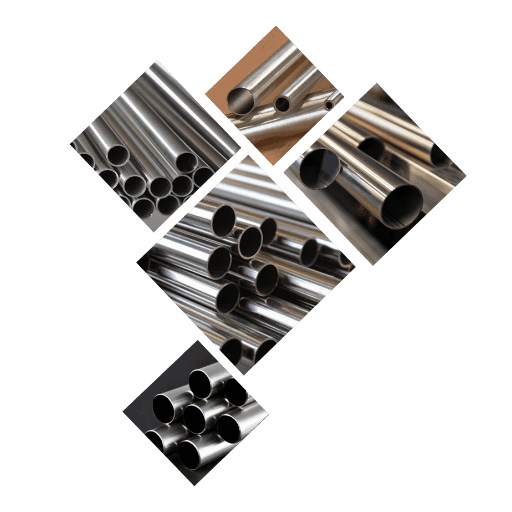
Use in Aerospace and Oil and Gas Industries
Stainless steel seamless tubes are critical in space and oil and gas industries due to their remarkable ability to endure extremely high pressure, harsh temperatures, and corrosive environments. These sectors demand durable materials, have a high strength-to-weight ratio, and resist oxidation, oxidization, all of which are achievable with stainless steel.
For aerospace, exhaust systems, fuel lines, and hydraulic systems, safety and performance are crucial, thus, components are crafted from 316 and 321 stainless steel. These 316 and 321 grades undergo high corrosion factors and maintain their structural integrity during high temperatures, for aerospace applications.
Seamless stainless steel tubes serve as vital components in process piping, heat exchangers, and downhole tubing. They feature robust alloys such as duplex 2205 and super duplex 2507 that are resistant to pitting and stress corrosion cracking due to saltwater and other chemicals. In addition, seamless tube manufacturing has improved with new advancement such as precision cold-drawing which provides tighter dimensional tolerances and improved surface finishes enabling these tubes to withstand extreme mechanical stress.
Decades of innovation in alloy composition and fabrication processes makes stainless steel seamless tubes a dependable choice for these critical industries with regards to safety and operational efficiency.
Role in Food and Beverage Processing
In the food and beverage sector, where cleanliness, corrosion resistance, and robust construction are vital, stainless steel seamless tubes serve a critical function. Their hygienic nature makes them very useful in fluid transfer, heat exchangers, and processing systems.
More recently, seamless tubes have been manufactured using methods such as electro-polishing, which improve surface smoothness and minimize contamination, enabling the seamless transfer of said products with little to no residue. Parts of food machinery are made from food-grade stainless steel, particularly grades 304 and 316L, due to their exceptional resistance to high temperatures and corrosive substances such as acids and salts usually prevalent in food processing.
In beverage industries, seamless tubes are crucial for the operational efficiency and safe functioning of systems like pasteurization, filtration, and even carbonation. Contemporary designs ensure minimal wear and prolong life spans which diminishes downtime, maintenance, and cost for food production units. Their dependability makes them an indispensable part of the food and beverage processing industry.
Importance of Instrumentation and Fabrication
Stainless steel seamless tubes are critical in instrumentation and fabrication because of their unmatched accuracy, strength, and resistance to environmental factors. These seamless tubes have remarkable uniformity of dimensions, which is the most important requirement for high-end instrumentation like pressure gauges, flow meters, and temperature sensors. Their seamless construction also ensures that there are no weak points or flaws that could lead to failure at high pressures or high temperatures.
Fabrication-wise, seamless stainless steel tubes are essential for the fabrication of highly sophisticated and strong assemblies in aerospace, chemical processing, oil, and gas industries. These seamless products also have an advantage in that the material’s inherent resistance to corrosion guarantees durability even when exposed to harsh conditions. Their seamless construction also contributes to uniformity in welding and bending. This structural assurance is beneficial to sophisticated manufacturing processes, including but not limited to automated work and three-dimensional metal printing, where even the slightest flaw can lead to a significant loss in productivity.
More recently, other branches of engineering have improved the technological capabilities of seamless stainless steel pipes. Improved alloy compositions and techniques in surface finishing make these stainless steel tubes resist pitting, crevice corrosion, and stress corrosion cracking, which are important even for general applications, let alone specialized ones. Furthermore, seamless integration into intricate systems is guaranteed due to modern fabrication processes ensuring integration with contemporary systems engineered to meet today’s standards.
How to Maintain and Increase the Longevity of Stainless Steel Seamless Tubes?
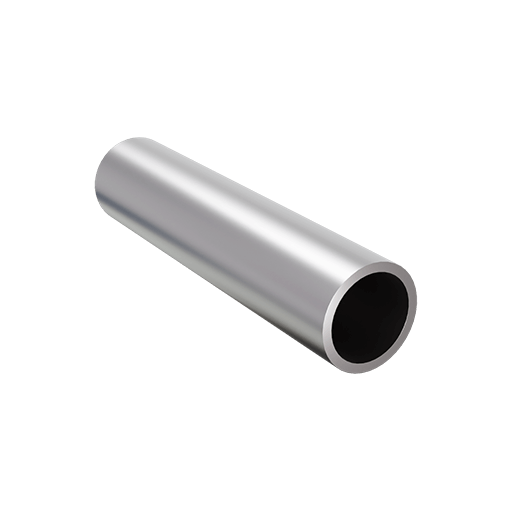
Best Practices for Preventing Corrosion
To keep stainless steel seamless tubes corrosion-resistant while working at their best over time, specific maintenance and operational procedures must be followed. One of the primary steps is to clear surface contaminants, like chloride residues and metallic particles, which can damage the protective chromium oxide layer on the surface, regularly. Non-abrasive cleaning agents or any strong cleaning solutions containing high concentrations of chloride should never be used.
Chloride and high humidity are known to be detrimental to the material in harsh corrosive environments; hence, its limited exposure is essential. Reduction of fresh air circulation along with uncontrolled ventilation and humidity will increase the harmful elements, while uncontrolled room ventilation and humidity can improve it.
Choosing duplex or super-austenitic alloys outperforms stainless steel under stress corrosion cracking and other forms of specific corrosion, hence the former are better suited for aggressive environments. Increasing the base metals’ passive chromium oxide layer through passivation treatments also helps tube protection. Systematic maintenance is essential as frequent check-ups help in detecting and preventing wear and localized corrosion in its early stages.
Seamless tubes can be used for a long time while keeping the business effective and dependable under difficult conditions if these preventive tactics are coupled with constant supervision and the newest stainless steel technology.
Understanding the Impact of the Environment on Tube Durability
Factors in the environment have a significant impact on the corrosive wear processes and the lifetime of seamless tubes, especially sophisticated ones utilized under industrial and austere conditions. Elements such as moisture, the temperature range, salinity, and even chemical contaminants can accelerate the wear and corrosion processes. As an example, the increased presence of chloride ions in some marine environments exacerbates the pitting and crevice corrosion-prone attack that occurs on stainless steel materials. Moreover, extreme corrosive environments can result in thermal stress, which, over a long duration, can lead to fatigue and cracking of the material.
These impacts are often mitigated by adapting the material science to the precise operating conditions of the system, which many industries prefer. To counter the environmental impacts, more advanced alloys like duplex or super-duplex stainless steels, which have higher corrosion resistance, are commonly used. The application of proper surface treatments, such as electropolishing or coating with protective layers, further improves the resistance to corrosive agents. It has been shown that predictive modeling, coupled with real-time monitoring, is proving to be very useful in mitigation impact strategies and adjusting countermeasures in real time.
With data-driven techniques and an understanding of the pressures put on seamless tubes, monitored operational demands significantly reduce the need for maintenance while extending the service life.
References
- HandyTube: This source discusses the benefits of seamless stainless steel tubing, including its low risk of impurities, corrosion resistance, and cost-effectiveness.
- Priminox: A comprehensive guide to stainless steel seamless pipes, detailing their manufacturing process, versatility, and applications.
- McNeil Instruments: Explains the essential features and superior qualities of stainless steel seamless tubes, focusing on their manufacturing and structural advantages.
Frequently Asked Questions (FAQ)
Q: What is stainless steel seamless tubing?
A: Stainless steel seamless tubing is a type of tube that is made from stainless steel alloy without any welded seams. It is created through an extrusion process that ensures a smooth finish and is often used in high-pressure applications.
Q: How is seamless stainless steel tubing manufactured?
A: Seamless stainless steel tubing is manufactured by extruding and drawing the stainless steel alloy to form a tube with a continuous, uniform structure. This process eliminates the need for welding, which enhances the tube’s strength and durability.
Q: What are the advantages of using seamless pipes over welded tubing?
A: Seamless pipes offer several advantages over welded tubing, including higher strength, uniformity, and better corrosion resistance. The absence of welds reduces the risk of weak spots, making seamless pipes ideal for high-pressure and high-temperature applications.
Q: What are the common applications of 304 stainless steel tubing?
A: 304 stainless steel tubing is widely used in various industries, including construction, petroleum, and food processing. Its high strength, corrosion resistance, and ability to withstand extreme temperatures make it suitable for a range of uses, from pipe piles to OCTG (Oil Country Tubular Goods).
Q: How does the quality control process ensure high-quality, seamless pipes?
A: The quality control process for seamless pipes involves rigorous testing and inspection to ensure they meet industry standards such as ASTM. Tests may include checking the outside and inside diameter, wall thickness, and surface finish to ensure the pipes are of high quality and suitable for their intended use.
Q: Can stainless seamless tubes be customized for specific lengths?
A: Yes, stainless seamless tubes can be fabricated and cut to specific lengths to meet the requirements of various construction projects or machining applications. This customizability allows for greater flexibility in design and application.
Q: Why is 304 seamless tubing preferred in certain industries?
A: 304 seamless tubing is preferred in industries such as food processing and pharmaceuticals due to its high-quality surface finish, corrosion resistance, and ability to withstand acids like sulfuric acid. Its hygienic properties make it ideal for applications where cleanliness is crucial.
Q: How does the outside diameter and wall thickness affect the performance of stainless steel tubes?
A: The outside diameter and wall thickness of stainless steel tubes play a crucial role in determining their strength and performance. Thicker walls provide higher pressure resistance, while the outside diameter affects the flow rate and capacity of the tube, making it essential to select the appropriate dimensions for specific applications.

